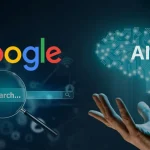
AI has already made significant advances in multiple areas. These include natural language processing (understanding and generation), robotics, and image recognition.
However, AI also poses substantial societal challenges that must be met in order to succeed – including providing all communities with access to essentials of artificial intelligence such as data, algorithms, hardware and expertise.
1. Deep Learning
AI researchers remain intent on creating artificial general intelligence (AGI). But in 2023, significant progress in various subfields of AI research such as vision and speech recognition, natural language processing (understanding and generation), multi-agent systems, autonomous driving and robotics was made.
Computer vision models enable AI to recognize objects, faces and scenes with remarkable accuracy, such as gun detection platforms like ZeroEyes that support police departments by detecting weapons in public places. Reinforcement learning offers another breakthrough, encouraging AI models to improve through trial-and-error with rewards and punishments as feedback loops.
GANs represent an impressive advance, enabling deep networks to generate artificial content such as images and videos that appear realistic. These innovations have already seen use in applications like customer experience (CX) management and text generation.
2. Vision
Visual data recognition technology has led to several breakthroughs in AI. For example, image recognition and computer vision technology power Apple Siri, Google Now and Amazon Alexa digital assistants; IBM Watson wins on Jeopardy; self-driving cars use visual recognition; facial recognition is often employed by security cameras and video surveillance systems.
Generative AI, using neural networks to produce realistic images and videos, could potentially change how people view photos, videos, and voices as authentic.
AI also empowers systems to design their own designs and algorithms through progressive learning rather than being programmed by humans, including algorithms that teach themselves how to play chess, recognize faces and objects in videos or determine which products should be recommended on an e-commerce website.
3. Natural Language Processing
Natural Language Processing is an emerging branch of AI that enables computers to comprehend, interpret and generate language the way humans do. This field encompasses search engines, machine translation platforms and voice assistant technologies as examples.
NLP can also be employed in enterprise search, which involves analyzing large sets of unstructured text data to find matches for queries. Furthermore, sentiment analysis utilizes NLP to help companies detect customer feedback that indicates potential issues – for instance an increase in negative comments posted online that might signal trouble for example.
But Natural Language Processing (NLP) does pose its own set of difficulties: Machines often struggle with understanding subtleties in human speech such as sarcasm or other subtlety, while training and operating large language models requires considerable resources and energy.
4. Robotics
From ocean depths to outer space, robots are performing feats only imagined in science fiction. Equipped with artificial intelligence (AI), these bots learn more about their environments and can perform specific tasks more efficiently than ever before.
These devices may be fitted with sensors like video cameras that act like eyes, photoresistors that react to light or microphones that act like ears to create a 3-dimensional map of their environment and use this data point to interpret advanced programs that instruct their computers on what actions to take next.
Some robots are autonomous and require no human input for operation; others can be remotely operated (with human control over general moves and actuator changes) or supervisory (requiring only knowing its task to complete). We must regulate broad objectives for AI instead of cracking open individual algorithms’ black boxes in order to protect humanity while taking bias seriously as an issue and maintaining mechanisms that enable human oversight.
5. Machine Learning
Machine learning algorithms are driving advancements across various industries. Computer vision applications leverage machine learning algorithms to enhance accuracy of autonomous vehicles, medical diagnostics and security systems while fraud detection solutions use machine learning algorithms to reduce investigation times and increase detection accuracy.
Reinforcement learning advances have allowed AI agents to learn through trial-and-error, making this form of augmented intelligence applicable in robots, virtual assistants and image creation software. Generative models use generators and discriminators to generate content for artificial art transforming this field of artificial art.
Explainable AI (XAI) is an emerging area of research which seeks to increase AI system understanding of their decisions and predictions, creating greater transparency, accountability, reducing biases and encouraging responsible AI adoption. Technologies within this domain include interpretable models as well as post-hoc justifications.








